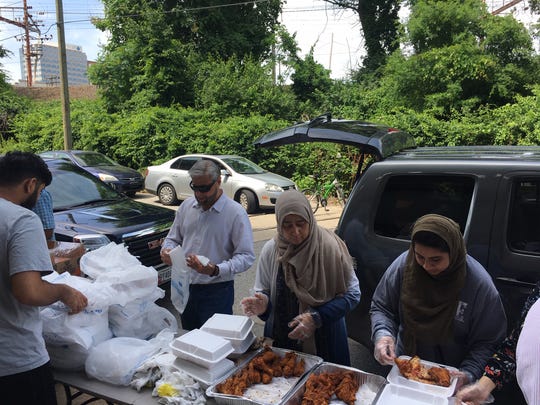
by blogadmin | May 29, 2019 | Blog Post, Delaware, Media Publishing's, Year 2019
You are not a Muslim. You have no Muslim friends. And you haven’t seen, read or heard anything positive about Muslims — ever. You never came across anything nonviolent and not disgusting about them.
Me neither!
No matter where I went, Muslims had always been in the news for the wrong reasons.
In India, the UK and even during my last 20 years here in the U.S., I have seen the anger and animosity against Islam and the Muslim communities only grow stronger and louder over the years. President Trump successfully rode it, among other things, to the White House.
I was home drinking tea in Dover on 9/11. In 2009, my wife and I, along with our two children, stayed at The Taj Palace Hotel in Mumbai, India where, only a year earlier a terrorist attack had killed 166 people.
Perpetrators in both cases were Muslims.
Internationally, we constantly hear about the barbaric and inhuman acts of Muslim terrorist groups like ISIS, the Taliban, Al Qaeda, Boko Haram, the Khorasan group, the Haqqani network and their offshoots.
An interfaith coalition distributes food to the homeless at Front and Lombard Street in Wilmington
Reaction to these groups and incidents often are quick and emotional. In Delaware, two Republican state senators
walked out of the Senate during a Muslim prayer in April 2017. The reason, one of them said, was that women and minorities are not treated fairly and respectfully by Muslims.
With no or negligible interaction with Muslims, does the negative barrage make us believe that all followers of Islam are constantly conspiring to commit evil? To explore that question, I launched a soul-sponsored expedition to discover the truth.
I asked Islamic Society of Delaware’s (ISD) interfaith chair Irfan Patel for his reaction to the senator’s allegation. “His actions show lack of understanding of our faith,” he said. “Islam teaches equal rights to men and women. In fact, laws of inheritance are a prime example of how women’s rights are respected in Islam. To give some context, women were not given electoral rights in many western societies until recently.”
I am a Sikh. Delaware’s second gurdwara (Sikh temple) opened in the summer of 2015 in Middletown. Weeks after, I organized an interfaith peace prayer there in August to mark the third anniversary of the Oak Creek, Wisconsin gurdwara killings.
We had decided on one speaker from one house of worship for the event. But, a couple of days before the meeting, I received a call from a stranger who turned out to be a professor at the University of Delaware.
He dispelled my “only one mosque” assumption. “There isn’t only one, not even two, but seven mosques in New Castle County,” he enlightened me. And Patel confirmed there are in fact 12 mosques in Delaware serving the state’s more than 10,000 Muslims.
Delaware’s Muslim community is as diverse as our nation. Its constituents are men and women of African, Middle Eastern, South Asian, Far Eastern and even European origins. They represent a range of human endeavor: business, academia, engineering, construction, health care, medicine, computing, art, music, writing and poetry.
Similarly, their food, dress, interests, opinions and friendships are varied.
I meet many members of the Muslim community at interfaith events throughout Delaware. They are eager and reliable participants in the Interfaith Peace Walk I organize every April on Newark’s Main Street. Led by Vaqar Sharief and his wife Uzma Vaqar, they join in the distribution of food to the homeless and needy each month at Front and Lombard in Wilmington.
Naveed Baqir of Delaware Council on Muslim and Global Affairs was in the Senate to read the Muslim prayer when the senators walked out.
“I met with both of them afterward,” he said. “Since then, they have supported us. Recently they supported a concurrent resolution (HCR 46) on the Ramadan month,” Baqir said.
It was similarly heartening to read the New York Times story, “Muslim groups raise thousands for Pittsburgh synagogue shooting victims.”
In recent weeks, many Muslim organizations have been hosting Iftar dinners to celebrate Ramadan. These events have wide participation from the community, including non-Muslims.
There is an undesirable vacuum between Muslims and non-Muslims everywhere that allows for misunderstandings and stereotypes which are often exploited by those with their own agendas and uninformed views. A continuing effort from Muslims and non-Muslims alike needs to be made and sustained to bridge this gap.
In the meantime I salute all of those, in Delaware and beyond, who are already working to do so.
– – – – – – –
This column was published online by the www.delawareonline.com on May 29, 2019.

by blogadmin | May 13, 2019 | Blog Post, Delaware, Media Publishing's, Sikhism, Year 2019
Years ago, I was at a college classmate’s house in my hometown, Patiala. His retired colonel neighbor asked me, where in the United States I lived. “Delaware,” I replied.
“Umm…Where?”
I repeated, slowly, “Delaware.”
The colonel narrowed his eyes, picked up his large tumbler of some strong drink, (rum, probably), gulped it in one go, and said, “Delaware…huh? What kind? Software or hardware?”
Could this ignorance, coupled with bigotry, have led to the killing of three Sikh women and a Sikh man at an apartment complex in Ohio’s Cincinnati city, on 30 April? While External Affairs Minister Sushma Swaraj had said that this was “not a hate crime”, questions continue to linger amid investigation into the case.
Is it possible that the Sikh family was more vulnerable (in the eyes of the perpetrators) because they were Sikhs / Asians?
Sikh Diaspora in Delaware & Cultural Diversity
Almost all the South Asians living in Delaware are first generation immigrants. As long as they could eat their rice or rotis at home, their cultural and religious aspirations rarely superseded family and economic priorities. Therefore, I was amazed to see a huge (and diverse) turnout at Lalkar 2019 , a national collegiate bhangra and fusion dance competition. From the 62 university teams that had applied, eight teams were selected to perform at the University of Delaware.
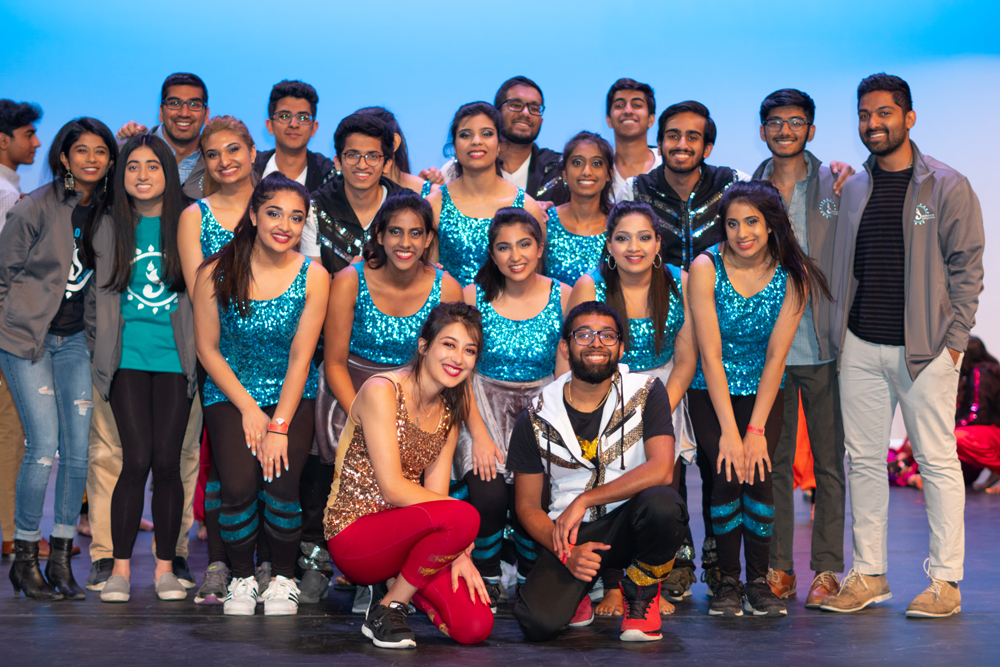
Significantly, the event’s success was a true tribute to the message of Guru Nanak in his 550th birth year—bringing people together in respect, peace and love.
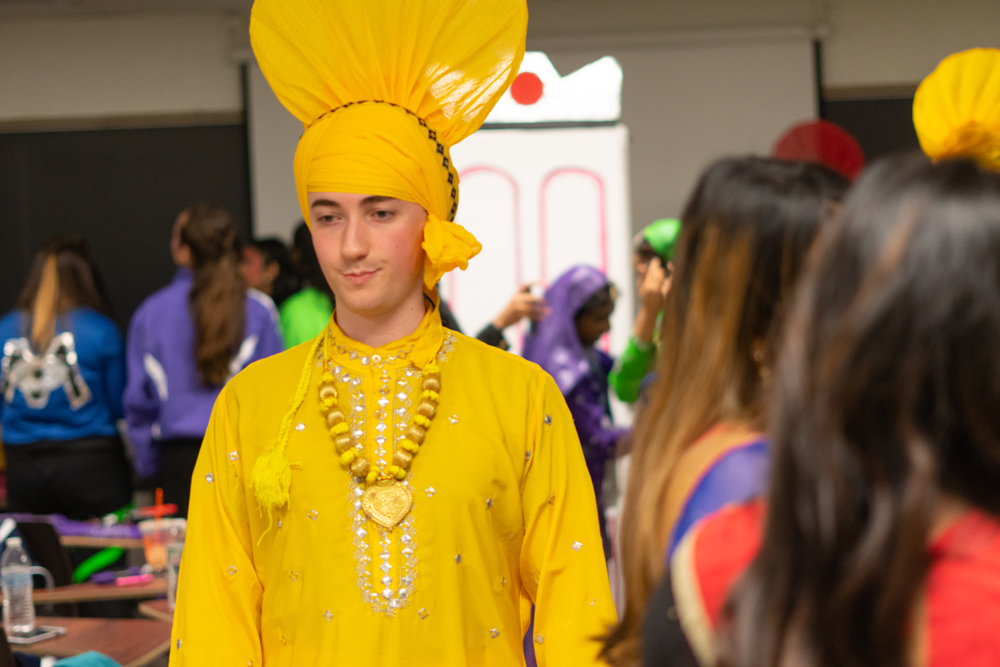
On 19 March, the Delaware Sikh Awareness Coalition (DSAC) organised a luncheon in Dover, the capital of Delaware. It was before we went to the state Legislative Hall, where the Senate and the House were scheduled to pass a concurrent resolution, declaring April 2019 as ‘Delaware’s Sikh Awareness and Appreciation Month’.
The participants at the luncheon were a diverse lot, and included men and women as young as 16 and as old as 86. Those originally from India included Gujaratis, Punjabis, Sindhis, Delhiwallahs, UP, Bihar, MP, and many from the southern part of India. Among the Americans there were people across Christian denominations, and one Jew.
Various community leaders, legislators and individuals of different castes, colour, abilities and professions were in the audience. Many of them even took the opportunity to experience wearing a Sikh turban.

‘Why a Real Tribute to Guru Nanak Should Be An Interfaith Celebration’
The topic of discussion at the luncheon was ‘Why a real tribute to Guru Nanak’s 550th should be an interfaith celebration’. Most had never even heard of Guru Nanak.
Starting from the “Na ko Hindu, Na Musalman” (No one is Hindu, no one is Muslim) proclamation after his communion with God in 1499, Guru Nanak used art (writing hymns in divine poetry) and music to take his message of Ek Onkar (all creation by one creator) to the world. Along with two companions, Bhai Bala and Bhai Mardana – the latter playing the rubab – Guru Nanak used melody and music to spread his message.
His successors temporally and spiritually built on the foundations of peace and communal harmony that Guru Nanak had laid.
Among the 36 were Baba Sheikh Farid, Bhagat Namdev, Sant Kabir (the maximum contribution by a non-Guru author and the fifth largest among all authors), Bhagat Ravidas, Bhagat Kalshar, Bhagat Nalh.
The holy text also depicts the importance of dissent, and that too, respectful dissent. On page 1380 of the Sri Guru Granth Sahib, Guru Amar Das disagrees with Baba Farid ji after more than 250 years, and the divine dialogue is presented in a sublime way. In fact, Farid ji’s bani (hymn) is in the Sri Guru Granth Sahib, before which millions bow their heads every day. This also depicts the virtue of tolerance and regard for all, that Sikhism embodies.
What Guru Nanak Truly Wanted
At the end of the presentation, a slide show on Harmandir Sahib, whose foundation was laid by Sufi saint Mian Mir Sahib, was presented – to further illustrate the point of communal harmony and religious tolerance. Post-luncheon, we went to the Legislative Hall where Delaware Senator, Bryan Townsend, introduced the resolution in the Senate, and Representative Paul Baumbach introduced it in the House. It was unanimously passed in both the chambers. Governor John Carney signed an executive proclamation, declaring April 2019 as ‘Delaware Sikh Awareness and Appreciation Month’.
This was the third year in a row that this feat was accomplished. But what made this edition stand out is the participation of diverse groups, across communities. This is what we believe, Guru Nanak really wanted.
– – – – – – –
This column was published online by the www.thequint.com on May 13, 2019.
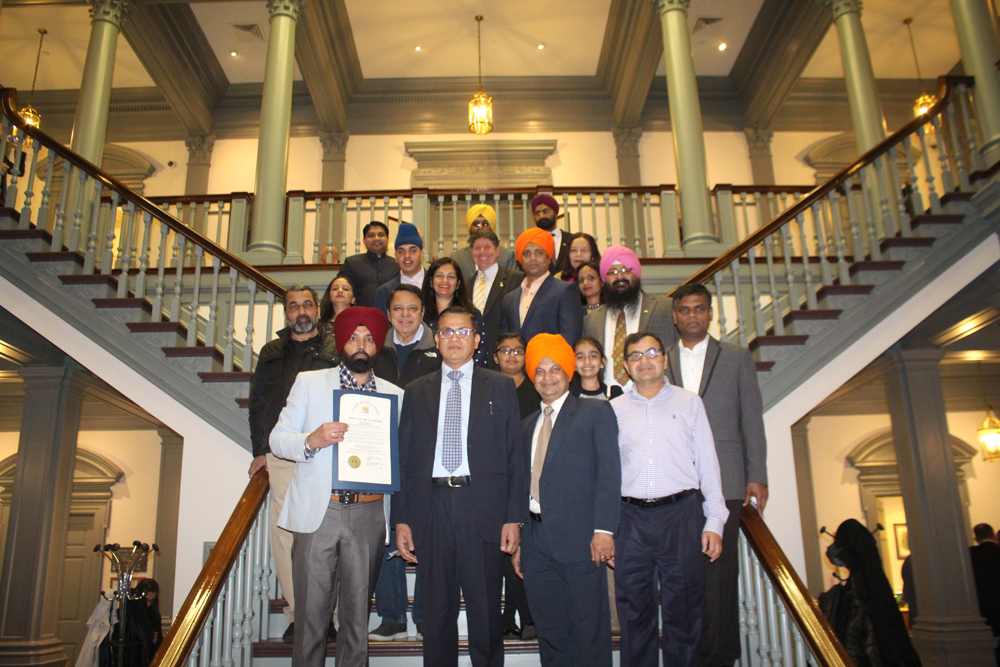
by blogadmin | Apr 8, 2019 | Delaware, SAM, Sikhism, Year 2019
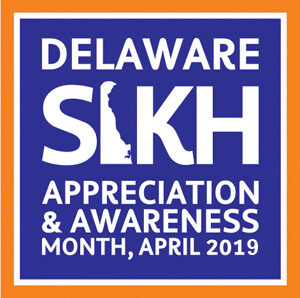 Delaware Governor John Carney has signed an executive proclamation naming April 2019 as the ‘Delaware Sikh Awareness and Appreciation Month’; in recognition of the contribution of the small but influential Sikh community in the economic and social milieu of the state. This is the third straight year Delaware is observing the Sikh awareness month.
Delaware Governor John Carney has signed an executive proclamation naming April 2019 as the ‘Delaware Sikh Awareness and Appreciation Month’; in recognition of the contribution of the small but influential Sikh community in the economic and social milieu of the state. This is the third straight year Delaware is observing the Sikh awareness month.
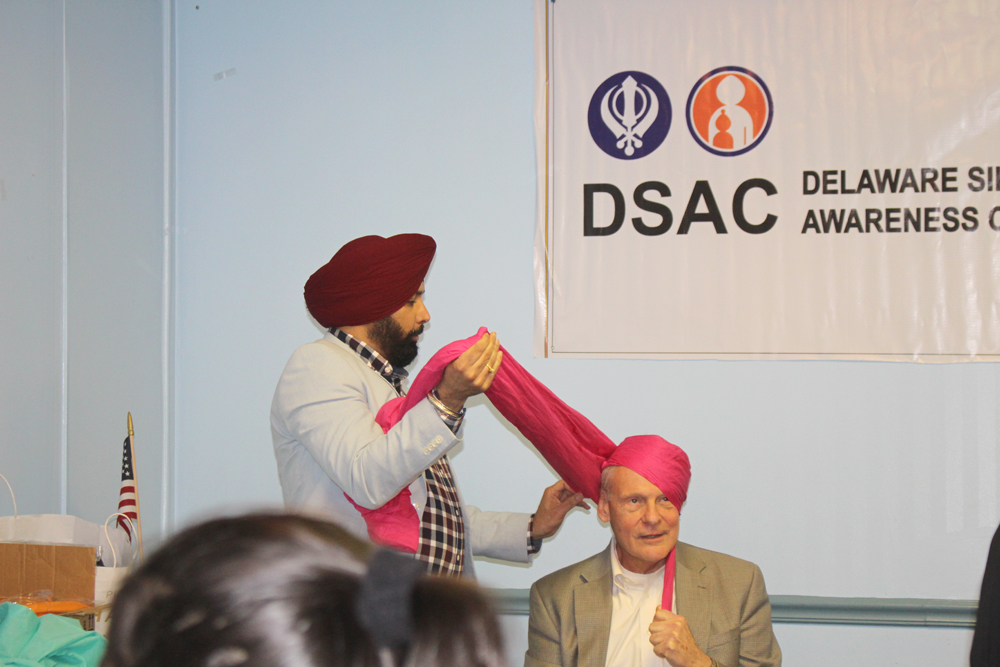
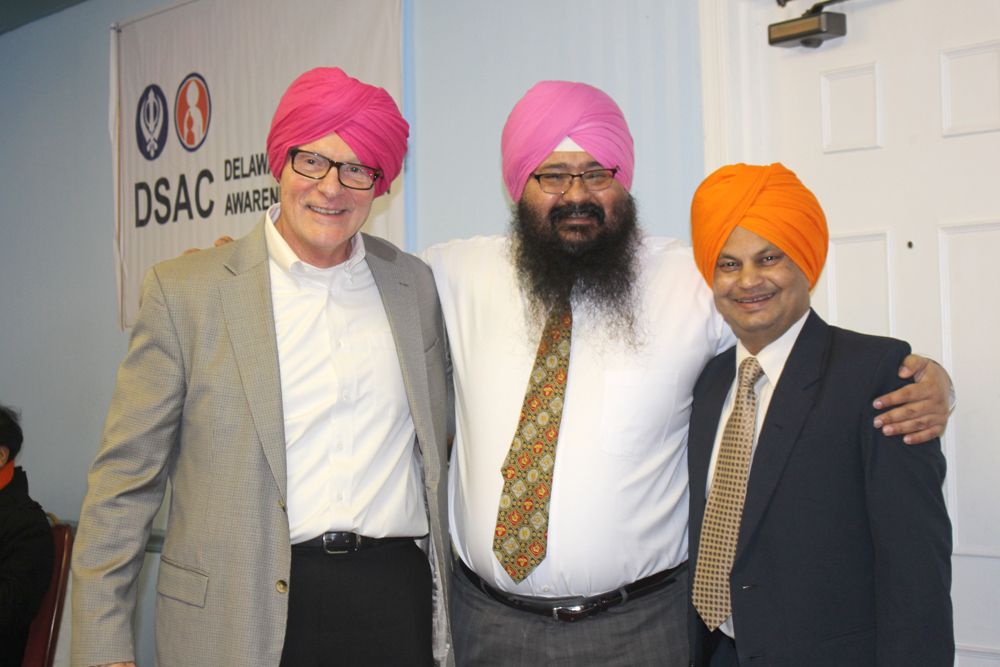
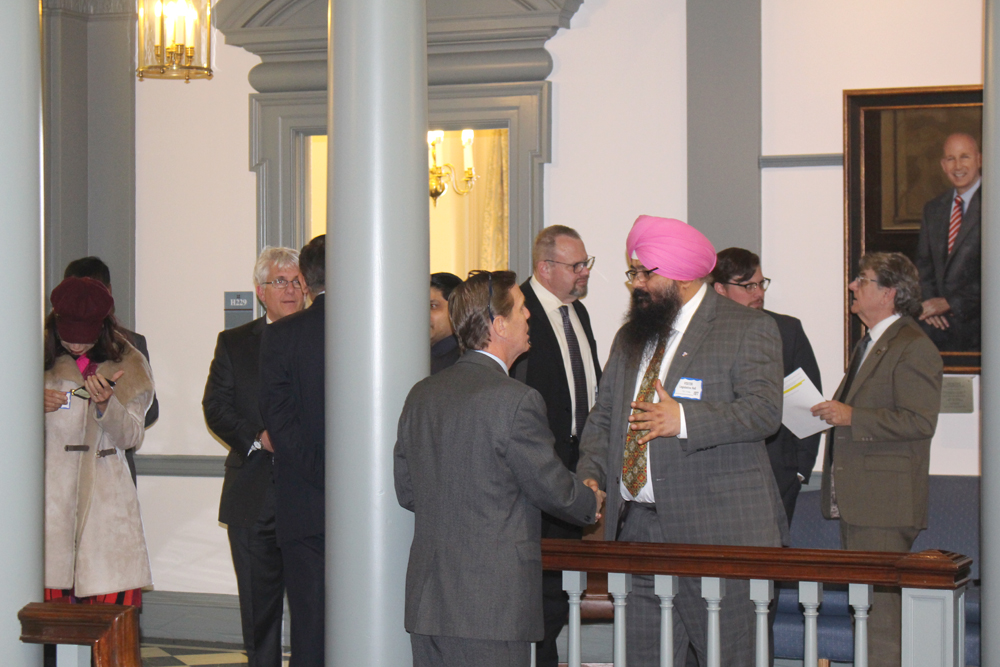
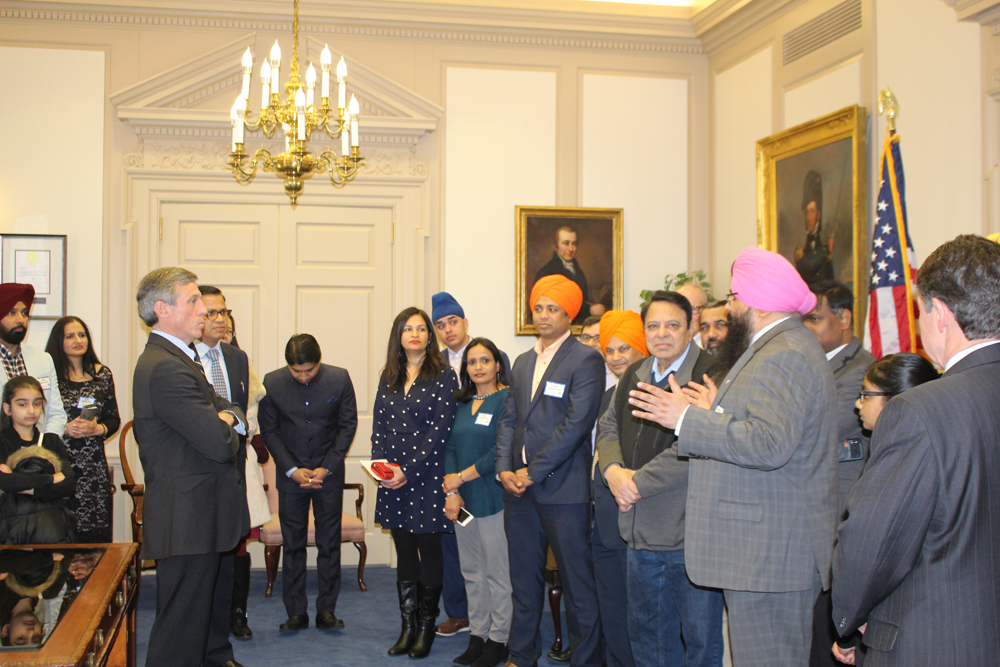
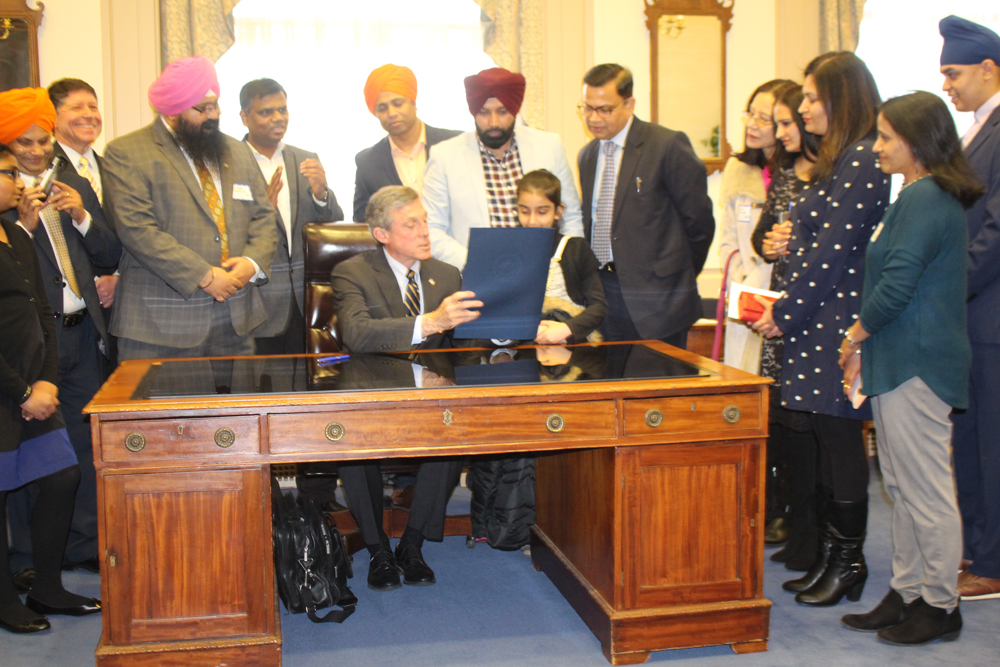
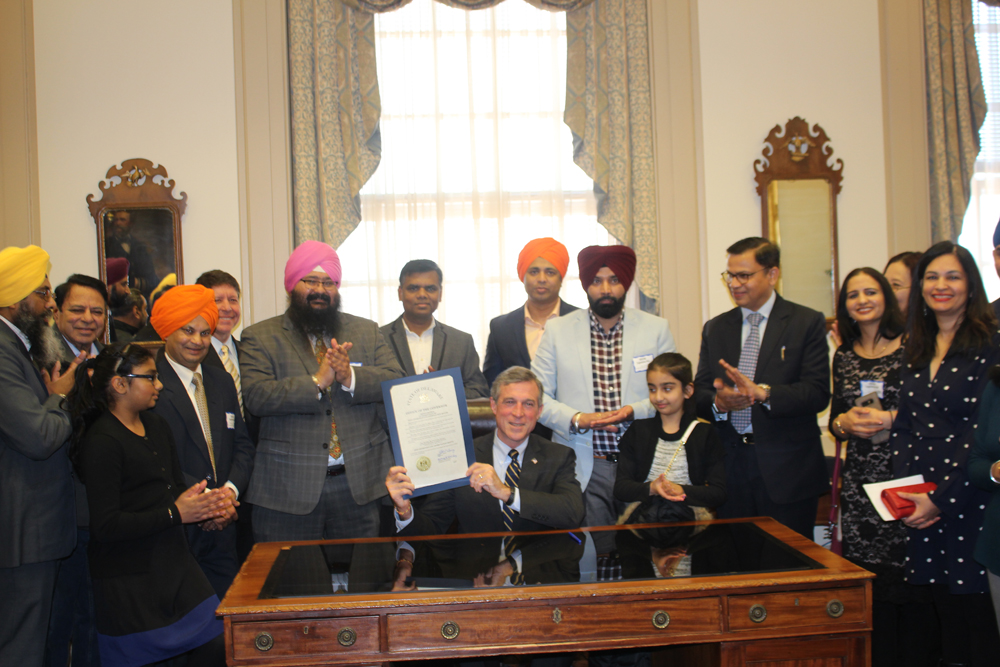

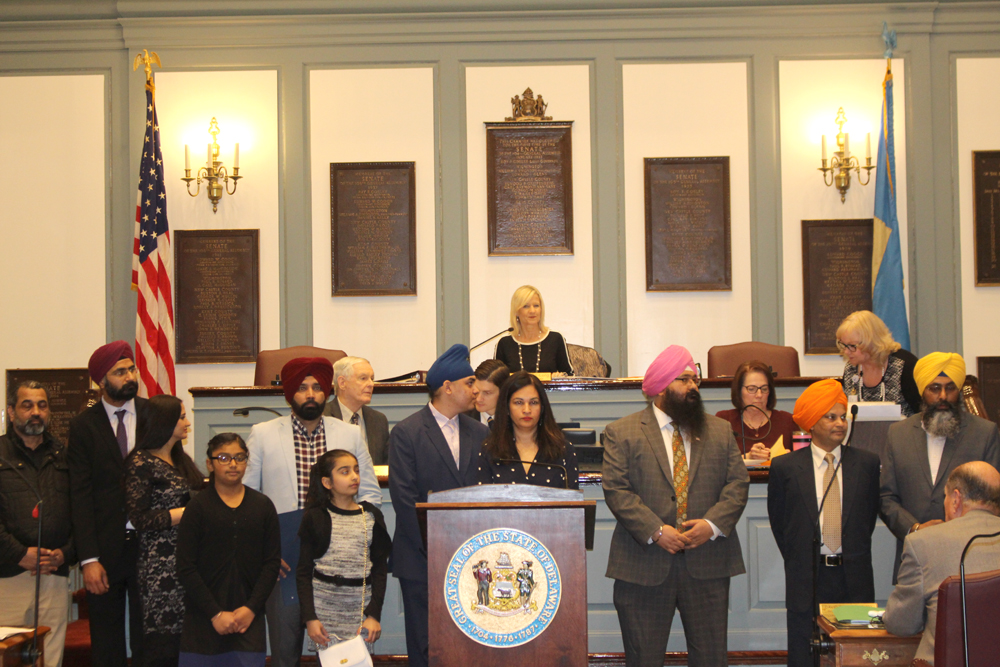
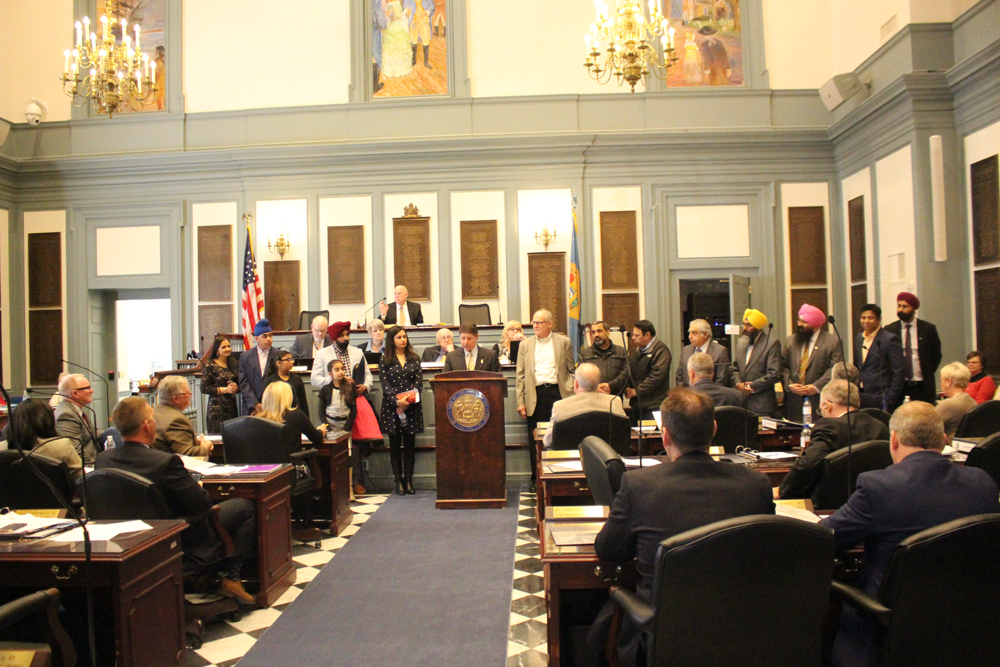
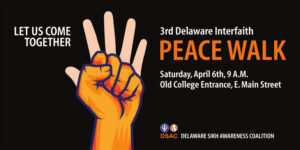 They are all fingers. But different. In look, size, ability, strength, and position. But the hand they belong to is One. Since they know it, they live and work together: Harmoniously. Peacefully. Lovingly!
They are all fingers. But different. In look, size, ability, strength, and position. But the hand they belong to is One. Since they know it, they live and work together: Harmoniously. Peacefully. Lovingly!
We all are those fingers. April 6th, let us come together to become the Hand!

by blogadmin | Mar 20, 2019 | Blog Post, Delaware, Sikhism, Year 2019
All three of them are from Delaware. All three of them are beacons of sharing and caring. They epitomize ordinary people doing extraordinary things.
They are all Toms, and although they may not even know each other, they are comrades in service to those in need.
Tom Davis
I met the first Tom, Rev. Tom Davis, slightly over six years ago. He was part of a river of kind and concerned men and women who flowed into Delaware’s first and the only gurdwara (Sikh house of worship) at the time, Sikh Center of Delaware, for a candlelight vigil in the aftermath of the gurdwara shooting in Oak Creek, Wisconsin.
In that terrible incident of hate, six Sikhs were fatally shot during a service by 40-year-old Wade Michael Page in September 2012. Candlelight is an apt metaphor for Tom’s work.
A Vietnam veteran and retired Presbyterian pastor, Tom expressed an interest in learning more about Sikhism. More than that, I think, he was interested in exploring ways to help the local Sikh community heal.
It is no wonder he has been a commissioned interfaith peacemaker in New Castle Presbytery of the Presbyterian Church for many years.
Tom is an avid photographer, writer and musician. His insatiable curiosity extends to learning and using the latest software tools and applications as a way to keep his mind sharp, and he is always happy to help others who don’t find the rising sea of technology friendly and welcoming.
However, Tom’s special service is reflected in his dedication to helping our veterans.
More than 20 veterans take their own lives every day. Most of us, despite our dismay, sadly sigh and then move on to deal with our own day-to-day problems.
But not Tom.
He has been investing all his skills — as a writer, researcher, poet, filmmaker, photographer, man of cloth, singer, instrument player, peace lover, yogi and fundraiser — to this consuming cause. He is focused on creating awareness about the deep and deadly role of the “moral injury” that Tom says is a main factor in the high rate of veterans’ suicides.
In a proactive effort, he established the nonprofit Interfaith Veterans Workshop (IVW) to help veterans connect with each other and various faith communities. Though not a veteran myself, I was also invited to be a part of the IVW, perhaps to strengthen its interfaith participation.
The group is currently working on creating a “Veterans Peace Video Project” under Tom’s leadership. It features quite a menu of activities to constructively engage the state’s veterans, ranging from hiking and writing to meditation and yoga.
Tom Clark
Tom Clark leads an interfaith initiative that is focused on service. He has a great company of men and women to help him in the cause. They label their humanitarian work under the acronym GWACS — God Wants All Children Serving.
I am part of the group that does service every fourth Saturday in Wilmington at the intersection of Front and Lombard. We gather to serve the needy and homeless with everything from baked goods and hot food to many other everyday need items such as toothbrushes, lip balm, hand lotion or clothing. Hats, gloves, socks and jackets have been very much in demand recently.
Tom Clark is a different kind of a leader. He is unassuming and doesn’t talk or smile much. He loves to work with other people but hates meetings.
In fact, the only meeting the group may have ever had was at Vaqar Sharief’s house a few years back.
“We decided from the word go to conduct no meetings, no bureaucracy, no paperwork, no bells and whistles, just focus on the service,” Tom had said at that meeting. The group follows it like a court order.
The only thing that happens away from the physical serving venue is a monthly after-service email communication from Tom that updates the number of servings, gives appreciation for the work done, and provides an update on continuing and new needs.
When I didn’t see Tom in our last December serving, I asked Vaqar, “No Tom?” I learned that he was caring for his ill wife. No wonder the normal connection and cheer was missing during the January service.
Tom’s spirit and strength are reflected in a line from the prayer he uses at the end of each monthly email: “We know what we are doing and what we are doing is not enough; Please help us do more.”
Tom Parkins
The third Tom’s email starts with mrfizzix. Why? Maybe he loves to state his love for physics, humorously!
I knew Tom from his emails in the Newark interfaith group, but we met in person only last December at the “Christmas for All” serving for homeless in Calvary Baptist.
He is a retired physics school teacher who is trying to defeat and diminish the “centrifugal” forces scattering the lives and families of the homeless and disadvantaged in our area. He is the “centripetal” part of many of Newark Empowerment Center’s activities aimed at helping the area’s needy.
NEC works in cooperation with Friendship House with a motto and philosophy of, “A Hand Up, Not a Hand Out.”
Tom’s commitment to service and betterment of others can be judged from his admission, “I pray a dangerous prayer that God will use me to bring joy to others.”
In today’s world where dictators, disruptors and kleptocrats are on rise, “The Three Toms” are uncommon men who share a common name. In this whirlpool of chaos where hate and violence are gaining new currency, what these three do seems blessed and beautiful.
If you would like to become involved in the work they do, please contact them via email: T.C. Davis, tcd123@gmail.com; Tom Clark, taclark2@msn.com; Tom Parkins, mrfizzix@aol.com.
– – – – –
This column was published online by the News Journal/Delawareonline.com on Wednesday, March 20, and printed in its Sunday, March 24th edition.
Website Link: https://www.delawareonline.com/story/opinion/contributors/2019/03/20/opinion-meet-three-toms-making-delaware-better-place/3221462002/?fbclid=IwAR1zaqfv8mH8Y42vgyGqrcOvlziAGF23vVdZe6QW59gFzw1MgrU33vk_hoI
Print Version:
https://charanjeetsinghminhas.com/wp-content/uploads/2019/04/newspaper_toms.jpg








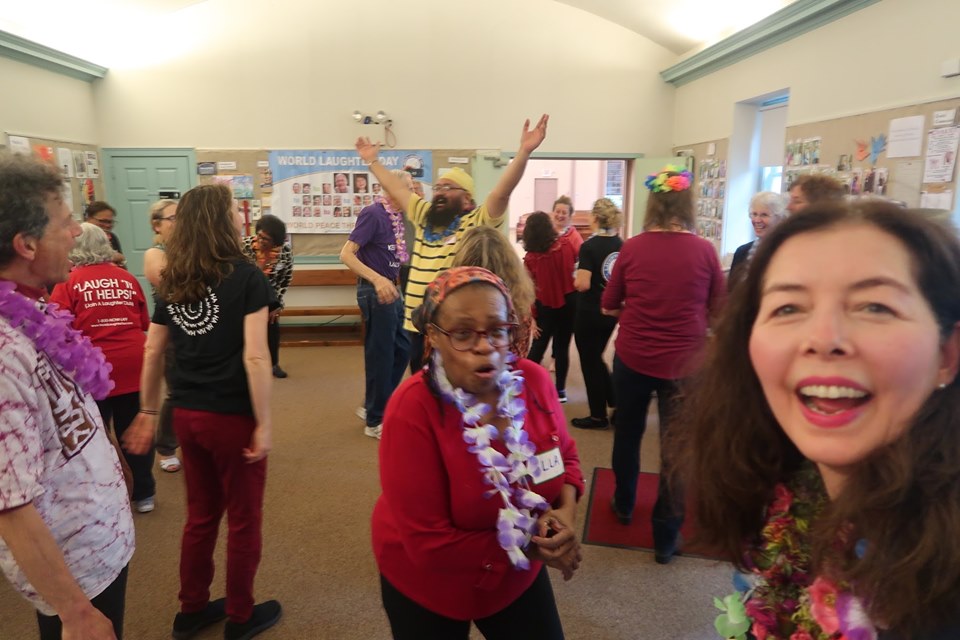
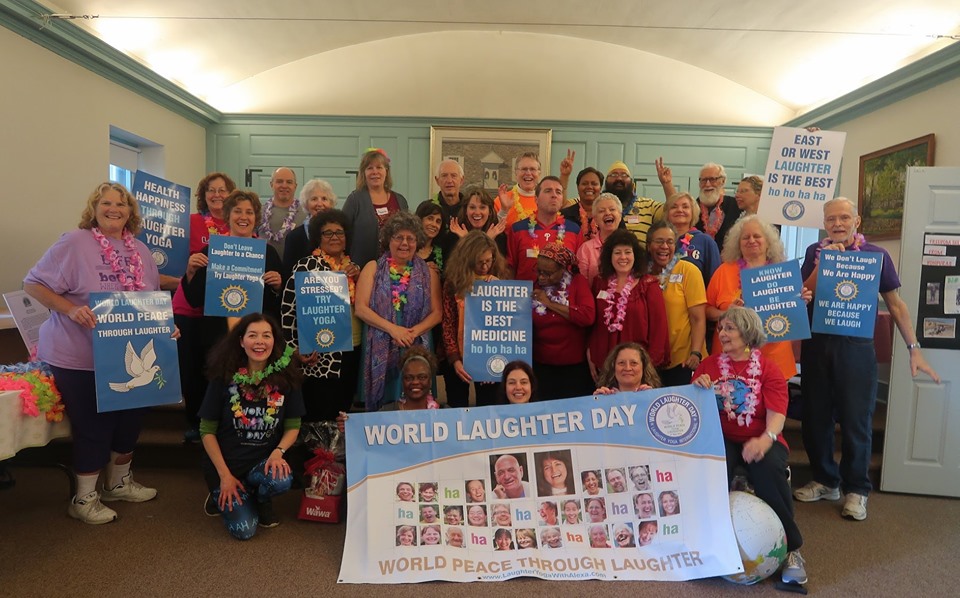

 Delaware Governor John Carney has signed an executive proclamation naming April 2019 as the ‘Delaware Sikh Awareness and Appreciation Month’; in recognition of the contribution of the small but influential Sikh community in the economic and social milieu of the state. This is the third straight year Delaware is observing the Sikh awareness month.
Delaware Governor John Carney has signed an executive proclamation naming April 2019 as the ‘Delaware Sikh Awareness and Appreciation Month’; in recognition of the contribution of the small but influential Sikh community in the economic and social milieu of the state. This is the third straight year Delaware is observing the Sikh awareness month.







 They are all fingers. But different. In look, size, ability, strength, and position. But the hand they belong to is One. Since they know it, they live and work together: Harmoniously. Peacefully. Lovingly!
They are all fingers. But different. In look, size, ability, strength, and position. But the hand they belong to is One. Since they know it, they live and work together: Harmoniously. Peacefully. Lovingly!
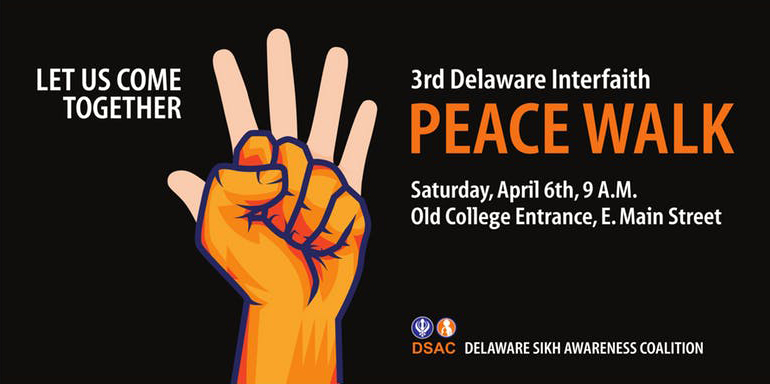
Recent Comments